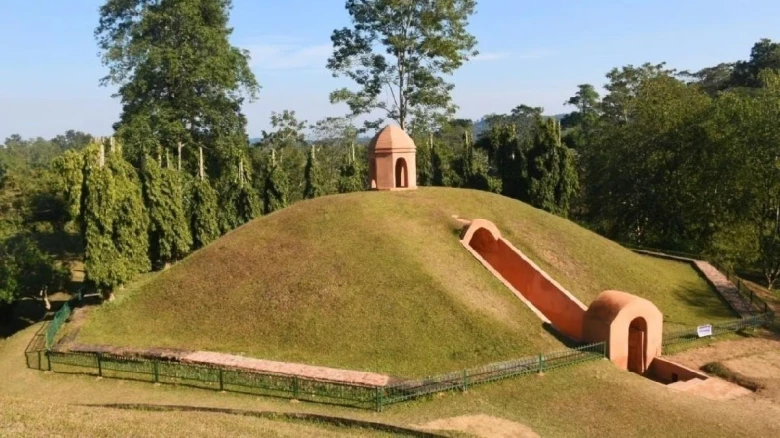The 'Moidams' are unique burial mounds used by the Tai-Ahom dynasty, characterized by pyramid-like structures...
Digital Desk: The International Council on Monuments and Sites (ICOMOS) has recommended Assam's 'Moidams' for inclusion on the UNESCO World Heritage List. These mound-burial sites from the Ahom dynasty are set to be reviewed at the 46th session of the World Heritage Committee in New Delhi from July 21-31.
Janhwij Sharma of the Archaeological Survey of India (ASI) confirmed that the 'Moidams' meet the necessary criteria for a UNESCO heritage tag. If accepted, it will mark the first cultural property from Northeast India to receive this prestigious recognition.
The 'Moidams' are unique burial mounds used by the Tai-Ahom dynasty, characterized by pyramid-like structures. The nomination, submitted for the 2023-24 cycle, highlights the historical and cultural significance of these sites. Vishal V Sharma, chairperson of the World Heritage Committee, emphasized the importance of this potential recognition.
The session in Delhi will also feature various cultural events and exhibitions. The Ministry of Tourism and other ministries have curated special exhibitions to showcase India's rich heritage. Among the highlights, the Maharashtra government has planned models of forts related to Chhatrapati Shivaji. Over 2,000 delegates from more than 150 countries are expected to participate in the event.
Additionally, the World Heritage Young Professionals Forum and the World Heritage Site Managers' Forum will be held during this period, focusing on heritage conservation and management.
The 'Moidams' are vaulted chambers (chow-chali), often double-storied, with an arched passage for entry. Atop the hemispherical mud mounds, layers of bricks and earth are laid. The base of the mound is reinforced by a polygonal toe-wall and an arched gateway on the west, according to the UNESCO website.
“Eventually, the mound would be covered by a layer of vegetation, reminiscent of a group of hillocks, transforming the area into an undulating landscape,” the description of ‘Moidams’ added.
Excavations reveal that each vaulted chamber has a centrally raised platform where the body was laid. Various objects used by the deceased during their life, such as royal insignia, objects made of wood, ivory, iron, gold pendants, ceramic ware, weapons, clothes, and even human beings from the Luk-kha-khun clan, were buried with the king, according to the UNESCO website.
The recommendation and potential recognition of the 'Moidams' underscore the rich cultural heritage of the Ahom dynasty and the significance of preserving such historical sites.








Leave A Comment